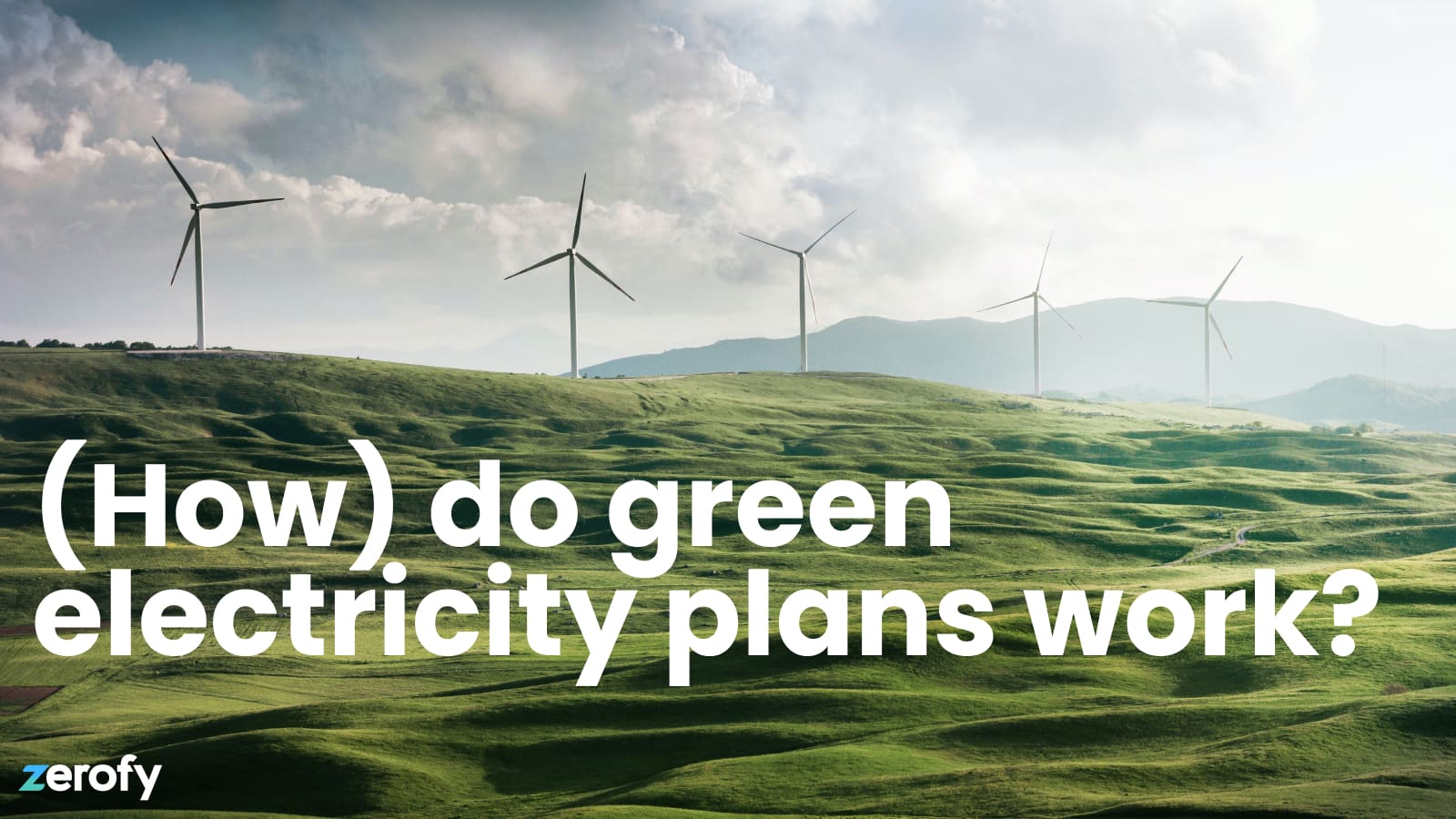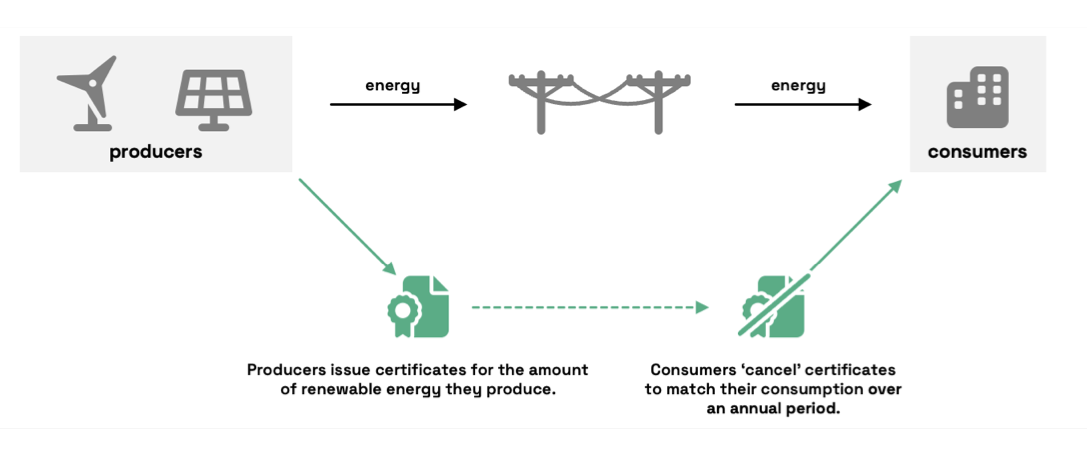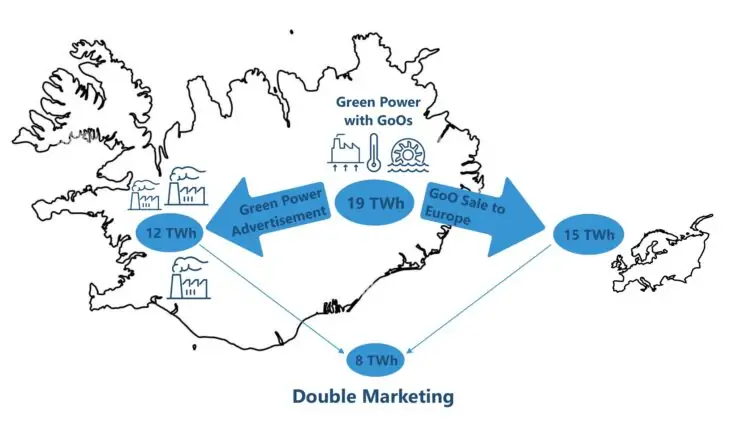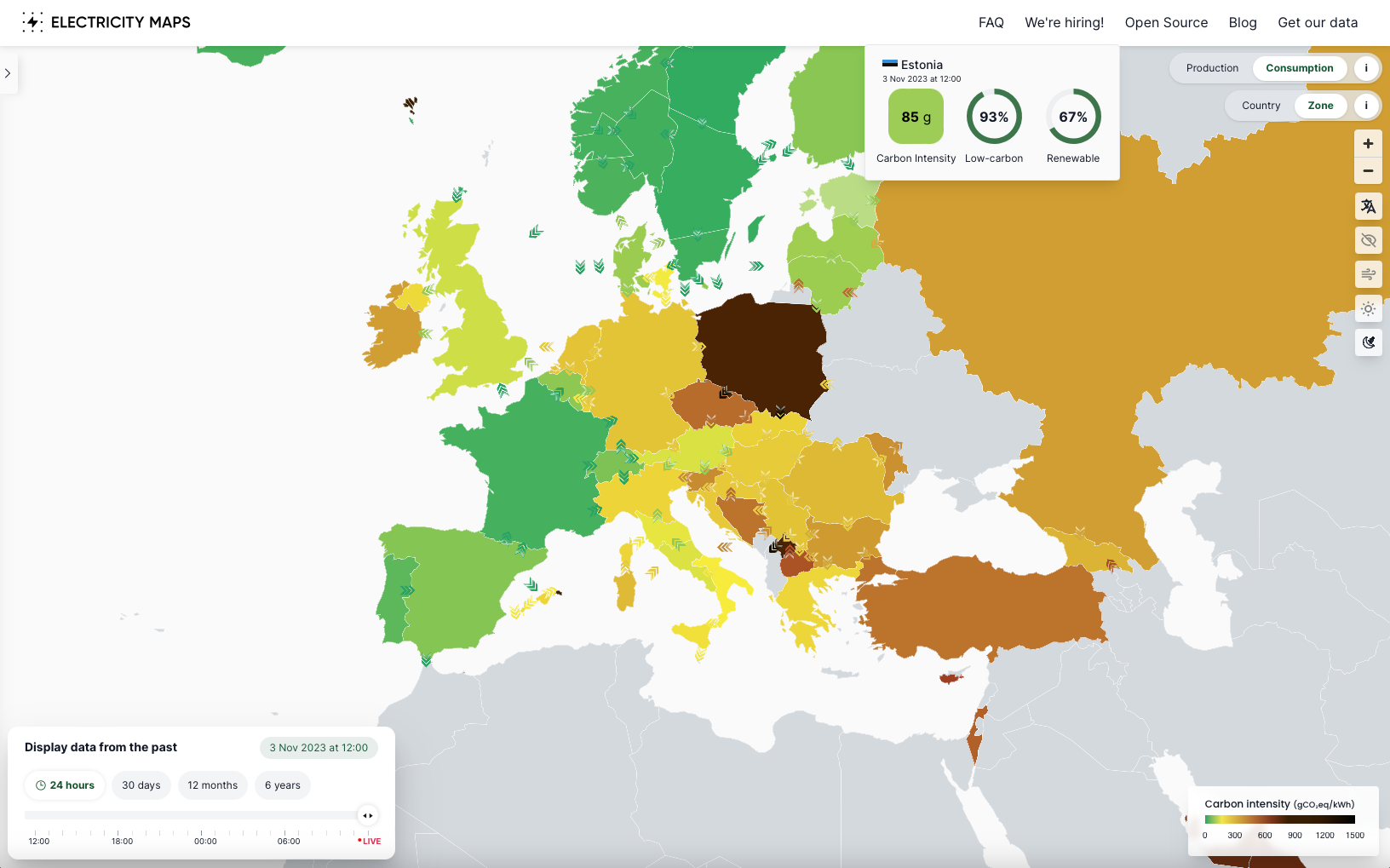(How) do green electricity plans work? And what is "24/7 carbon free?"

75% of global carbon emissions are caused by burning fossil fuels. That means that the transition of our global energy production to zero-carbon sources is paramount to tackle climate change. This effort to switch from oil, gas, and coal to (mainly) wind, solar, and hydro requires investment. Part of the required funds are collected through green energy plans, which collect a premium on the electricity price from consumers (both households and businesses). Businesses often use this procurement of green energy as a part of their “net zero” strategies, and for households it’s an easy way “to do their part” in the transition. But how do these plans actually work, and do they have the intended positive impact? This is what we want to look into in this post.
How do green energy plans work?
Green energy plans are not based on the actual electricity flows through the grid, but on a separate system of certificates that the producers of green energy can issue and sell. These certificates are called “Guarantee of Origin” (GOO), “Certificates of Origin” (CO), or REC (Renewable Energy Certificates). The name and details vary by region, but the principle is the same. For each unit (e.g. MWh) of green energy produced, the producer gets a certificate and can trade it on various markets. (A similar strategy is to buy certain renewable electricity annual volume directly from a producer by e.g. so called Power-Purchase-Agreements (PPAs))
A provider of a green energy plan usually just delivers their “standard” electricity mix, and then buys as many green energy certificates as they deliver electricity to their customers.
 (Figure source: Nordpool)
(Figure source: Nordpool)
As the issuing and trading of the certificates is independent from the physical electricity flows they typically don’t match up neither in time nor geographically. More specifically, as the volume of certificates traded usually spans a calendar year: suppose an energy provider in a year delivers 1 TWh “green” electricity to their customers, then that provider just buys certificates of 1 TWh to cover the year. The problem here is that the certificates may include production of solar energy that predominantly happens in summer, while the actual consumption of the electricity may be higher in winter. And of course solar would also be generated only during daytime but electricity is also consumed at night. Furthermore, the certificates can be bought from anywhere in Europe (for the case of Europe), even when the electricity couldn’t even physically flow between the seller and buyer extreme cases are certificates from Iceland sold in continental Europe).
The argument in favor of these certificates is that their proceeds still help to drive forward the deployment of renewables that would otherwise not have happened. And with that they help reduce carbon emissions. However, in a recent paper by Princeton/Tsinghua/Binghamton researchers came to the conclusion that annual procurement “[…] has zero or nearly zero long-run impact on system-level carbon emissions.” In other words: the concept doesn’t work as hoped or advertised. (The paper was for the case of the US and additional specific factors, but the overall result probably holds for most similar systems.)
 (Figure source: FFE)
(Figure source: FFE)
An additional challenge is that the green energy is often “double counted”. If a provider sold its certificates, technically it cannot claim its energy as “green” anymore for other purposes. This happens when the actual generation mix is advertised by some parties, and by others the certificates for the same mix. Tracking the attribution is of course complex, but an example for Iceland showed that out of 19TWh green power produced, 8TWh were likely double counted!
Recognising the shortcomings of the current system
We assume most consumers and most organizations are not aware of these shortcomings of current “green” electricity contracts and procurement. And how can they be: the matter is complex. What’s not helping is that even governmental bodies such as the Swiss Federal Office of Energy BfE keep reporting statements such as ”80% of electricity consumed in Swiss households is green”, but are including said certificates in this calculation.
The first step to improve the system is of course awareness. Platforms such as Electricity Maps are doing a great job highlighting the “real” intensity of current consumed electricity with their product, but also have educational resources for organizations looking to procure “truly” green energy.
Overall the awareness in the business world seems to be varying from organizations happily procuring and proudly advertising annual volumes of “green” electricity, while some organizations leading the pack like Google have already abandoned this approach and are very sophisticated in their thinking towards “24/7 carbon free energy” (see below).
On a governmental level the shortcomings are also being recognised and for example in Switzerland a shift towards quarterly or monthly accounting of certificates is being debated.
Tackling the shortcomings with “24/7 carbon free electricity”
While the challenges with the current approach may not yet be widely known, a number of actors have recognized them and several efforts are underway to “fix” the problem. One of these initiatives goes under the name of “24/7 carbon free”, a term to our knowledge popularized by Google with their work mentioned above, or “temporal matching” in the paper above. In this approach, green electricity production and the buyer’s consumption are matched hour-by-hour and may often also be required to be in an interlinked grid region to ensure geographic matching. This approach goes much further than for example switching from annual to quarterly GoOs and may have additional benefits such as driving deployment of storage solutions. Several organizations are working on the topic or have published studies, including The NordPool Group, the UN IPPC, EnergyTag and others.
But does hourly matching actually work, and does it make a difference? The paper mentioned above investigated exactly this and concluded that “… temporal matching drives significant reductions in system-level CO2 emissions […]. Electricity cost premiums for voluntary participants are near-zero under volumetric and emissions matching strategies and can exceed $20/MWh under temporal matching, but are reduced when a larger portfolio of advanced technologies is available for procurement.”
What can households do?
The first important step is awareness. If residential electricity contracts are advertised as “green” or companies advertise being powered by green energy, be aware that there may still be a long way to be truly green and carbon-free.

To understand better how “green” your real time current electricity is use platforms such as Electricitymaps.com. You can also use Zerofy to track your household’s carbon emissions from electricity consumption on an hourly granularity, and even break it down per device.
Electrifying your home and transportation are crucial. If you have rooftop solar and you consume as much as possible directly it helps you save costs and emissions. (And when using your own solar there are no doubts about its origin). Optimizing your solar utilization with our “Run on Solar” feature can help.
Finally, all of this doesn’t mean that as a household you need to go fully off-grid, but it’s important to keep pushing the grid to 24/7 carbon free production, while at the same time driving forward electrification of energy consumption in the home (e.g. heat pumps) and transportation (electric cars).